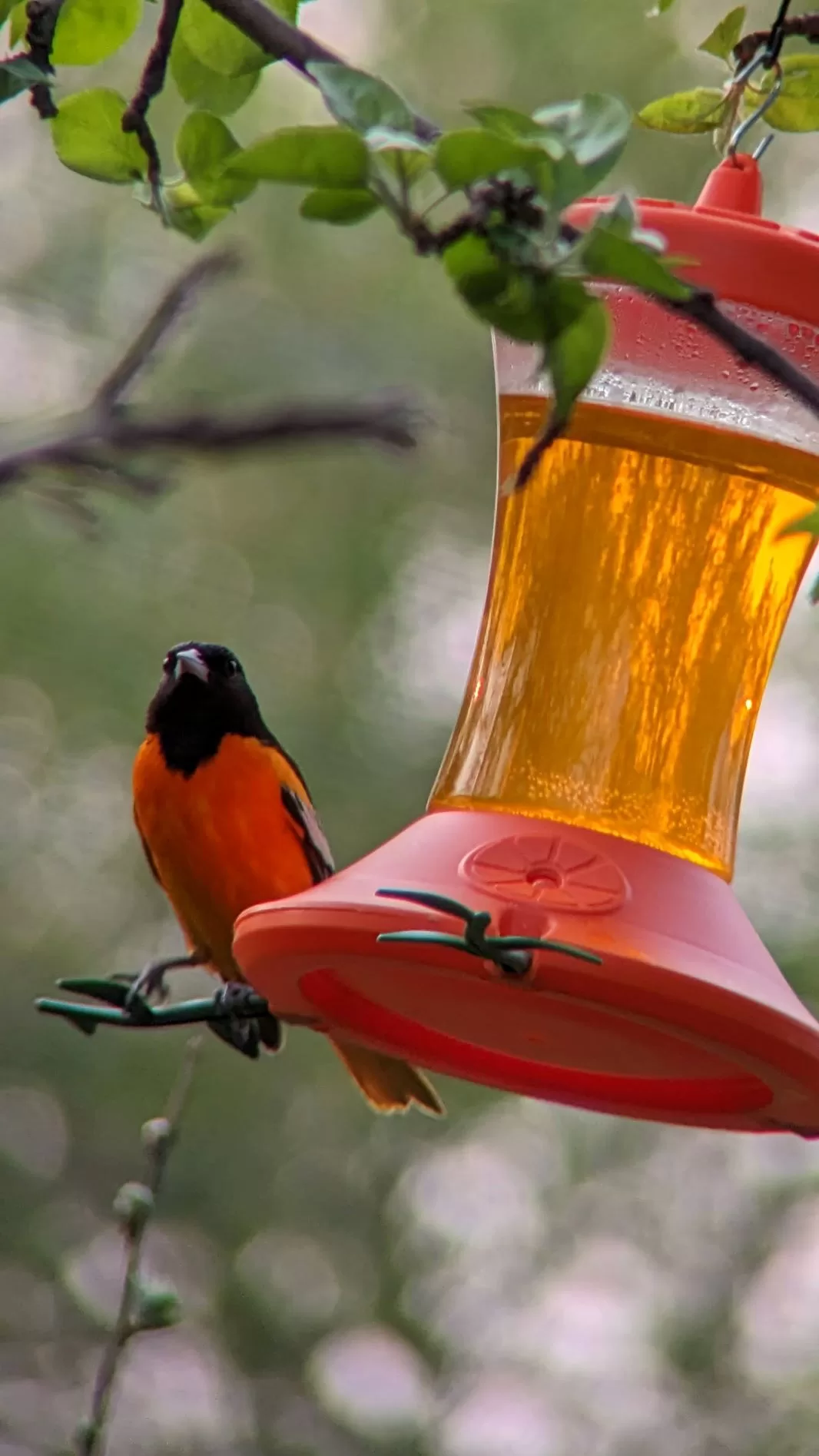Baltimore Oriole Identification
Identifying the Baltimore Oriole involves recognizing its striking appearance and distinctive vocalizations. Both male and female orioles exhibit notable differences in color and sound that aid in their identification.
Visual Characteristics
The male Baltimore Oriole is easily recognizable by its bright orange plumage, contrasted by a black head and back. The white wingbar adds to its visual appeal. This vibrant coloration makes it a standout in any environment, particularly among leafy branches.
In contrast, the female Baltimore Oriole has a more subdued appearance. She typically displays a yellowish tint with darker wings and back. Her lack of the vivid orange coloration can make her less noticeable among foliage.
Both sexes possess a pointed bill suited for feeding on fruit and insects. Their unique features contribute to their classification within the blackbird family, showcasing a mixture of striking beauty and functional design.
Vocalizations
The Baltimore Oriole is known for its melodic song which consists of whistles and clear notes. Males are particularly vocal during breeding season, using their songs to attract females and establish territory. Their songs can be described as a series of bright, ringing notes that vary in pitch and tempo.
Females also vocalize, though their calls tend to be less elaborate than those of males. Their sounds often include short chirps or whistles that play a role in communication, especially in nesting situations. Observers can use these vocalizations as a key method for identifying the presence of Baltimore Orioles in their habitat.
Habitat and Range
The Baltimore Oriole thrives in diverse habitats, including urban and rural settings. Its range spans across North America, where it is commonly found in areas supporting its nesting and feeding preferences.
Typical Habitats
Baltimore Orioles favor open woodlands, deciduous trees, and parks. They are often seen in orchards and backyards where they can find ripe fruits. The treetops offer ideal nesting sites for these birds.
They prefer areas with ample leaves for cover and foraging. Their diet consists mainly of fruits, nectar, and insects, making places with diverse vegetation crucial. The northern oriole may occupy similar environments, but they are more commonly found in specific regions.
Geographical Range
The range of the Baltimore Oriole extends from southern Canada down through the United States and into Mexico. During migration, they travel from their breeding grounds to wintering areas in northern South America.
They can be spotted along the Mississippi River during migration, facilitating their movement. The species is also recognized as the state bird of Maryland. Bird watchers often mistake them for the Bullock’s Oriole or even the American Robin due to similarities, but their distinct plumage sets them apart. Maps indicate their specific distribution, highlighting areas where they are commonly observed.
Breeding and Life Cycle
The breeding and life cycle of the Baltimore Oriole involves distinct nesting behaviors and comprehensive development of its young. This process highlights the bird’s adaptability and reliance on various food sources.
Nesting Behaviors
Baltimore Orioles are known for their unique and intricate hanging nests, often found in trees such as elms and willows. These nests are constructed primarily by females using materials like grass, bark, plant down, string, Spanish moss, and hair. The nesting season typically coincides with spring migration.
Female orioles display monogamous behavior during the breeding season. After selecting a nest site, she both gathers materials and weaves them into a secure structure. The nests are usually located high in the trees to avoid predators. Baltimore Orioles are opportunistic feeders, often attracted to backyard feeders that provide jelly or fruits like oranges.
Offspring Development
Once the female lays 3 to 7 eggs, incubation lasts about 12 to 14 days. During this period, the male helps by bringing food. Eggs are typically pale blue or greenish with speckles. After hatching, the nestlings are altricial, meaning they rely entirely on parental care.
Nestlings develop rapidly, demanding a diet rich in insects, nectar, and berries. They fledge approximately 14 to 20 days after hatching. Young orioles often stay close to their parents during their early days, learning to forage and navigate their environment. This life cycle emphasizes the importance of the breeding grounds for the species’ conservation and continued survival.
Share this content:

Post Comment
You must be logged in to post a comment.